A man throws a ball of mass m from a moving plank (A). The ball has a horizontal component of velocity u=3√34ms−1 with respect to ground towards another man standing on stationary plank (B), as shown in the figure. The combined mass of plank A with man is 2m each. The x-y plane represents the horizontal plane which is frictionless. If initially, plank A was moving with speed uˆi with respect to ground, then the relative velocity of plank B (in m s−1) with respect to plank A (after the man on plank B catches the ball) minus 10ms−1 is
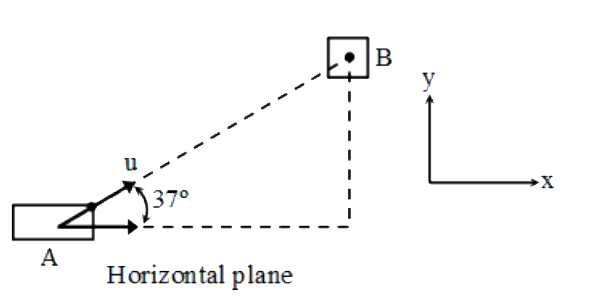
The correct Answer is:7
By conservation of momentum,
3muˆi=m(ucos37∘ˆi+usin37∘ˆj)+2m→CA
=→VA=11u10ˆi−3u10ˆj
Similarly =→VB=4u15ˆi+3u10ˆj
∴|VBA|=17ms−1
Topper's Solved these Questions
- NTA TPC JEE MAIN TEST 100Book:NTA MOCK TESTSChapter:NTA TPC JEE MAIN TEST 100Exercise:PHYSICS (SUBJECTIVE NUMERICAL)
Explore 10 Videos
- NTA NEET TEST 98Book:NTA MOCK TESTSChapter:NTA NEET TEST 98Exercise:PHYSICS
Explore 45 Videos
- NTA TPC JEE MAIN TEST 101Book:NTA MOCK TESTSChapter:NTA TPC JEE MAIN TEST 101Exercise:PHYSICS
Explore 30 Videos
Similar Questions
The figure shows a man of mass m standing at the end A of a trolley of maas M placed at rest on a smooth horizontal surface. The man starts moving towards the end B with a velocity urel with respect to the trolley. The length of the trolley is L.
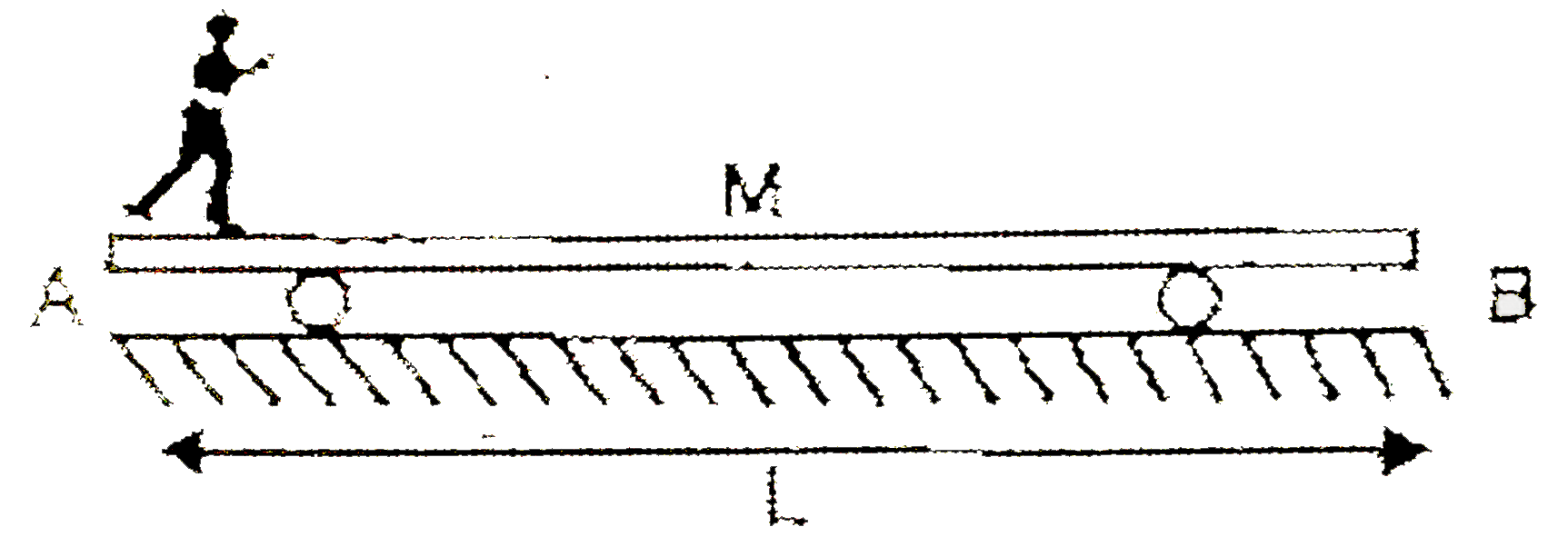
The velocity of the man with respect to ground v1 will be:
View SolutionA cylinder of mass at and radius R rolls on a stationary plank of mass M. The lower surface of the plank is smooth and the upper surface is sufficiently rough with a coefficient of friction μ. A man is to hold the plank stationary with respect to the ground, as shown Fig.
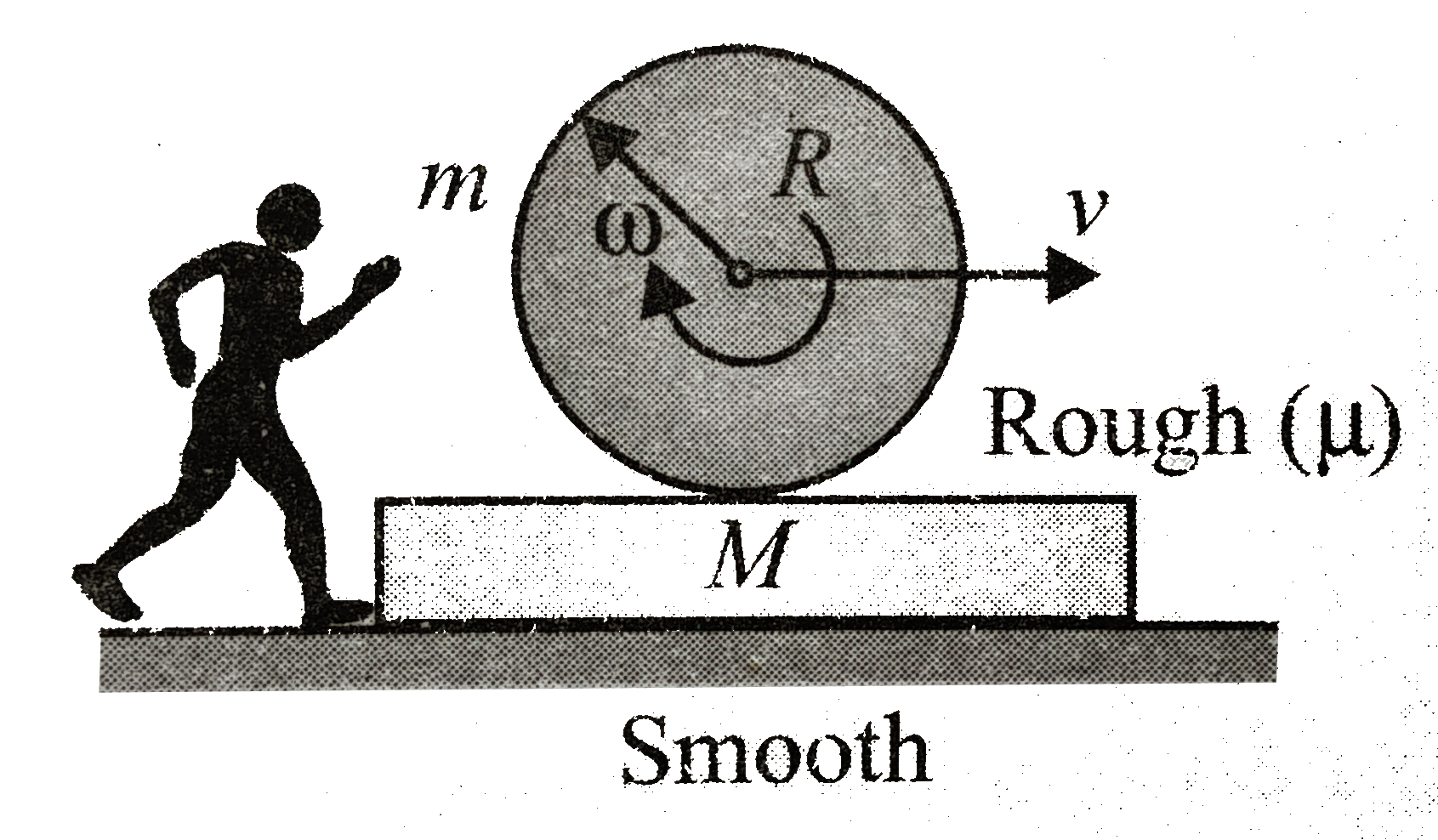
The force exerted by the man to keep the plank stationary is equal to……
View Solution
Knowledge Check
A block is thrown with 14ms−1 over a long stationary plank as shown. Beofre the block comes at rest with respect to plank
 AWork done by kinetic friction on the block be -180JBWork done by kinetic friction on the block will be 140JCNet work done by kinetic friction on the block plank system will be -180JDNet work done by kinetic friction on the block plank system will be +140J
AWork done by kinetic friction on the block be -180JBWork done by kinetic friction on the block will be 140JCNet work done by kinetic friction on the block plank system will be -180JDNet work done by kinetic friction on the block plank system will be +140JA plank is moving on ground with a velocity v and a block is moving on the plank with respect to it with a velocity u as shown in figure. What is the velocity of block with respect to ground ?
 Av−u towards rightBv−u towards leftCu towards rightDnone of these
Av−u towards rightBv−u towards leftCu towards rightDnone of theseA block of mass m is placed in equilibrium on a moving plank. The maximum horizontal acceleration of the plank for μ=0.2 is:
A2m/s2B3m/s2Cdependent on the mass mDnone of these
A man of mass m moves on a plank of mass M with a constant veloicty u with respect to the plank, as shown in figure.
a.If the plank rest on smooth horizontal surface, determine the velocity of the plank.
b If the man travels a distasnce L with respect to the plank, find the distance travelled by the plank with respect to te ground.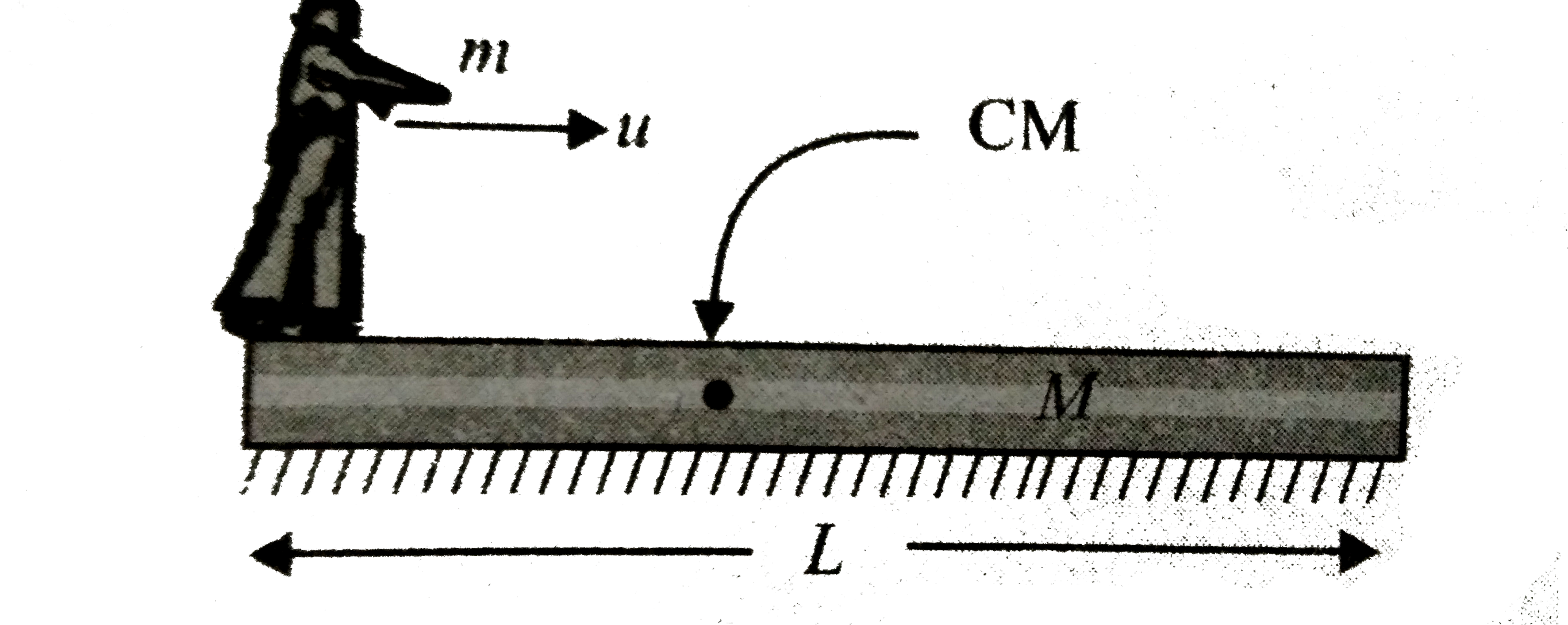
View SolutionA wooden plank of mass 20kg is resting on a smooth horizontal floor. A man of mass 60kg starts moving from one end of the plank to the other end. The length of the plank is 10m. Find the displacement of the plank over the floor when the man reaches the other end of the plank.
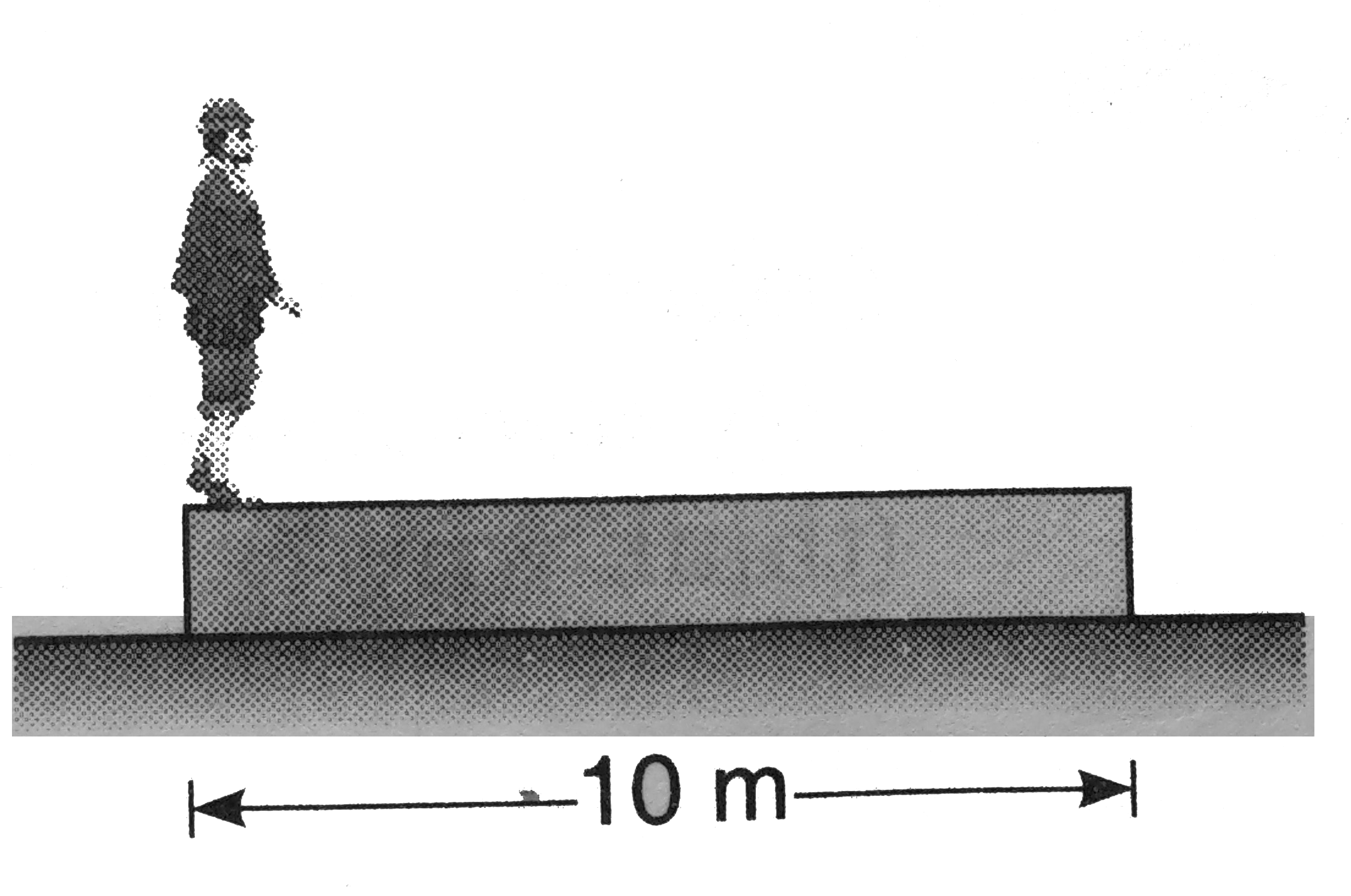
View SolutionA man of mass m is standing on a plank of equal mass m resting on a smooth horizontal surface. The man starts moving on the plank with speed u relative to the plank. The speed of the man relative to the ground is

View SolutionA man of mass M stands at one end of a stationary plank of length L, lying on a smooth surface. The man walks to the other end of the plank. If the mass of the plank is M/3, the distance that the man moves relative to the ground is
View SolutionA man of mass 80kg stands on a plank of mass 40kg. The plank is lying on a smooth horizontal floor. Initianlly both are at rest. The man starts walking on the plank towards north and stops after moving a distance of 6m on the plank. Then
View Solution

